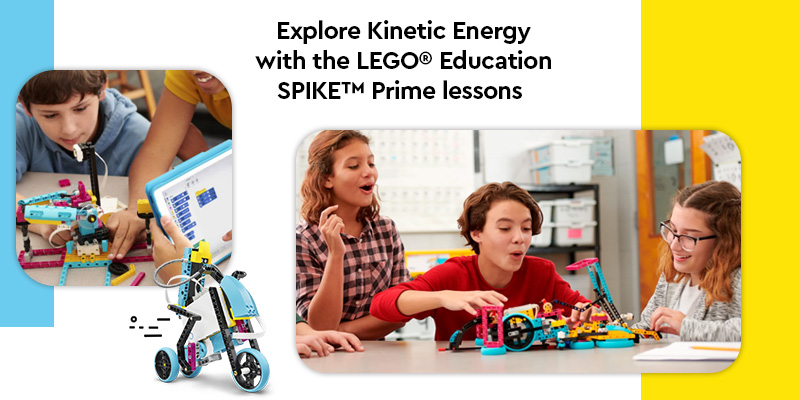Understanding kinetic energy is a fundamental concept in physics, and what better way to explore this than through a hands-on, engaging activity? The LEGO® Education SPIKE™ Prime lesson “Watch Your Steps” provides an exciting opportunity for students in grades 6-8 to delve into the facets of kinetic energy by measuring and analyzing their own movements. This structured lesson plan not only makes learning interactive but also integrates technology and engineering principles, preparing students for future scientific endeavors.
Engage: Setting the Stage
The lesson begins with a 20-minute engagement session designed to spark curiosity and lay the groundwork for learning. Students are introduced to the concept of kinetic energy through a relatable activity: measuring the number of steps they’ve taken. Then they learn to calculate the distance traveled, average walking speed, and the corresponding kinetic energy. Using this LEGO® Education SPIKE™ Prime lesson’s internal accelerometer, students can detect and record movements along three axes, providing a comprehensive dataset for analysis.
Explore: Hands-On Experimentation
In the 30-minute exploration phase, students build their own pedometers using the LEGO® Education SPIKE™ Prime lesson set. They can either follow provided building instructions or create custom models, fostering creativity and problem-solving skills. By programming their devices to count steps and graph acceleration over time, students gain practical experience in coding and data collection. This hands-on approach helps solidify their understanding of kinetic energy in a tangible way.
Explain: Interpreting Data
During a 15-minute explanation segment, students refine their programs to improve accuracy and performance. They record detailed data from their experiments and export it as CSV files for further manipulation. This stage emphasizes critical thinking as students interpret acceleration graphs and identify patterns that represent “steps.” Through these activities, they deepen their understanding of how speed and kinetic energy are interconnected.
Elaborate: Extending Learning
The elaboration phase, lasting about 25 minutes, encourages students to take their learning further. They can complete additional tasks using their SPIKE™ Prime sets or engage in extension activities that explore kinetic energy in different contexts. For example, students from schools in Dubai or Middle East regions, might compare data from their custom-built pedometers with that from a smartphone app, enhancing their analytical skills and understanding of measurement accuracy. This phase also includes opportunities for collaborative learning through information-sharing sessions.
Differentiation and Extensions
To accommodate diverse learning needs, the lesson includes differentiation strategies. For a simplified approach, students might recreate the experiment using only the hub, while more advanced learners can build custom pedometers and compare results across devices. Extensions in math and language arts further enrich the lesson, integrating skills such as approximation and technical writing. These interdisciplinary connections highlight the versatility of the LEGO® Education SPIKE™ Prime lesson in fostering comprehensive educational development.
Career Connections
Students inspired by this LEGO® Education module might explore careers in engineering and technology. The real-world applications of the skills learned through the LEGO® Education SPIKE™ Prime set can ignite interest in various STEM fields, paving the way for future academic and professional success.
In summary, the “Watch Your Steps” lesson from the LEGO® Education SPIKE™ Prime set is an exemplary model of innovative, hands-on learning. By engaging students in measuring and analyzing kinetic energy, this lesson not only enhances their scientific understanding but also develops critical thinking, problem-solving, and collaborative skills. With its structured approach and integration of technology, the LEGO® Education SPIKE™ Prime lesson prepares students for a bright future in STEM.

